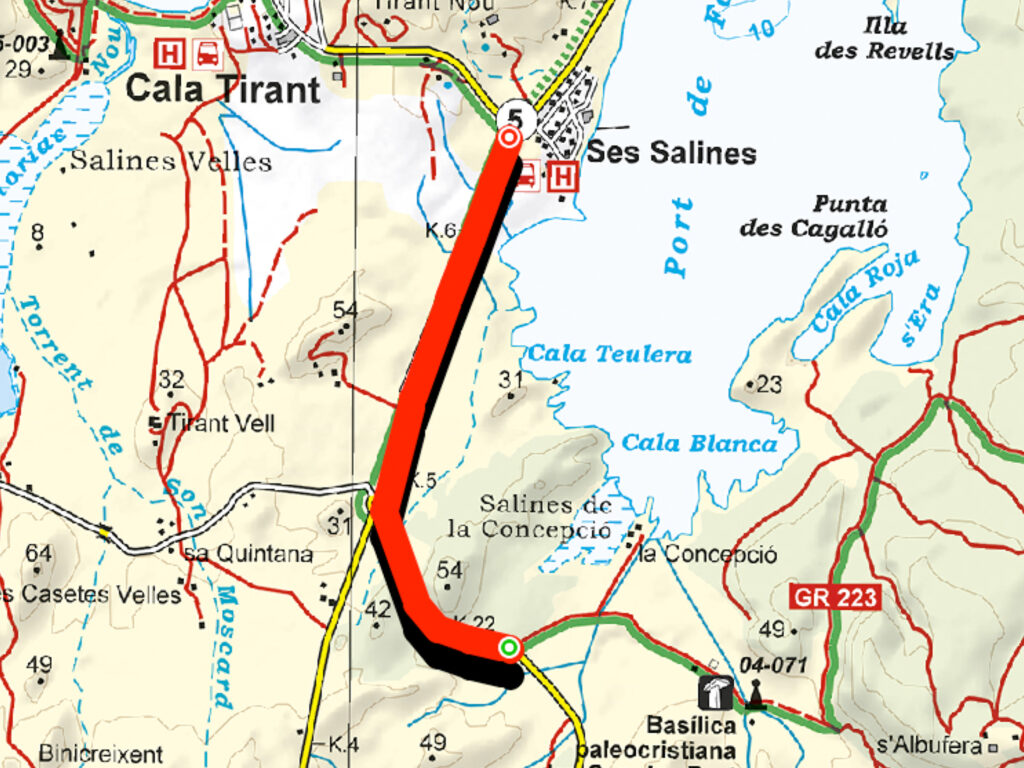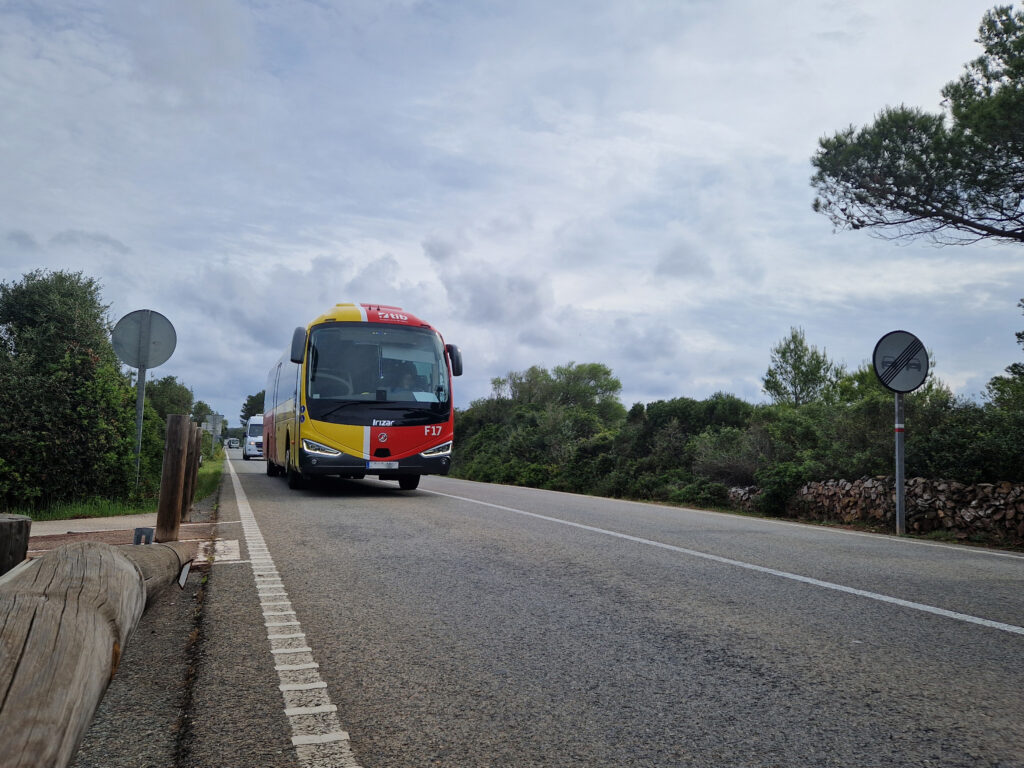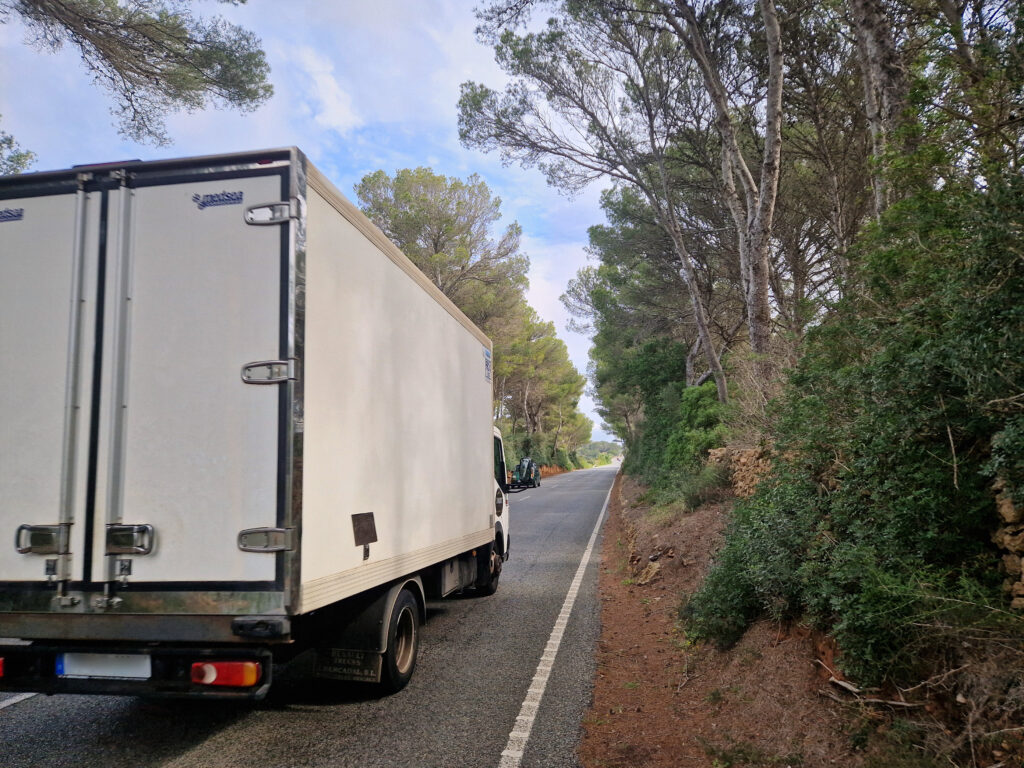The section of the route that runs along the Me-7 and Me-15 roads, between La Concepció and Ses Salines de Fornells, puts the safety of Camí users at risk. We are launching a petition campaign to find a safe solution. Help us by signing!
The Camí de Cavalls (GR 223) runs mostly through natural surroundings. Only about 30% of the route passes through urban or interurban areas. These are the least attractive sections for Camí de Cavalls 360º users, who especially enjoy the 70% of the route that crosses natural landscapes such as beaches, rocky cliffs, woods, rural paths, ravines, meadows, and a wide variety of other interesting settings.
Moreover, some of those interurban sections of the Camí de Cavalls put users’ safety at risk—especially hikers and runners, who must share the road with motor vehicles.

The most dangerous section of the entire Camí de Cavalls is undoubtedly the 2.6-kilometre stretch along the Me-7 and Me-15 roads, between La Concepció and Ses Salines de Fornells. It poses a risk that is unrelated to the activity itself and could be easily avoided. These are the reasons for our concern—and that of our participants:
- It is a section with no space for pedestrians: the Me-7 has very narrow shoulders, and the Me-15 has none at all.
- In some parts of the Me-15, there isn’t even enough space for hikers to step aside safely if a vehicle fails to maintain a safe distance.
- On the Me-15, there’s no room for a vehicle to leave the required 1.5-meter clearance when another vehicle is approaching in the opposite direction.
- To walk on the left, as established by traffic regulations, pedestrians must cross the road in three places that are not designated pedestrian crossings. This leads people to walk on the right-hand side of the road, which is less safe.
- Pedestrians are forced to share the lane with vehicles that may be driving at up to 90 km/h—assuming they don’t exceed the speed limit.
Since 2012, thousands of Camí de Cavalls 360º participants have expressed concern and dissatisfaction about this stretch of the route. We have tried to respond. At 40 Nord Outdoor S.L., we have communicated our safety concerns about this section to every Camí de Cavalls official at the Consell Insular de Menorca over the past thirteen years. As of today, no steps have been taken to improve safety.

A Risk Not Intrinsic to the Activity
The danger posed by the Me-7 and Me-15 roads is not intrinsic to hiking, trail running, or mountain biking. Hikers, trail runners, and cyclists are used to accepting a certain level of risk that comes with these outdoor activities—such as poor mobile coverage, limited access routes, rough terrain, or the possibility of adverse weather conditions.
However, these users should not be expected to accept the risk of walking, running, or cycling along roads with no shoulders, high-speed traffic, vehicles failing to maintain a safe distance, or drivers distracted by mobile phones. This is a risk that cannot be managed or controlled by hikers, runners, or cyclists—and it is much greater than the inherent risks of their activities.

Petition Campaign to Find Solutions
As the managing authority of the Camí, the Consell Insular de Menorca is responsible for its maintenance, proper use, and safety. For all the reasons stated above, we, the undersigned, ask the Consell Insular de Menorca to:
- Design and implement a definitive, safe solution. The fact that it may be a long process should not be an excuse for delay—on the contrary, it should be the reason to start immediately so that it can be completed as soon as possible.
- Until a permanent solution is implemented, take immediate action to improve the safety of this stretch. There are many possible measures: painting a bright-colored line along one side of the road; installing larger signs warning of pedestrian presence and adding reminders throughout the stretch; reducing the speed limit and/or implementing speed control measures, etc.
Sign here and join this campaign to make the Camí de Cavalls free of dangerous roads.

